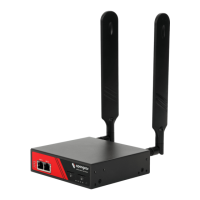Chapter 7: Power, Environmental & Digital I/O
166
§ The NUT network server program upsd is responsible for passing status data from the drivers to
the client programs via the network. upsd can cache the status from multiple UPSes and serve
this status data to many clients. upsd also contains access control features to limit the abilities of
the clients (e.g. so only authorized hosts may monitor or control the UPS hardware)
§ There are a number of NUT clients that connect to upsd to check on the status of the UPS
hardware and do things based on the status. These clients can run on the same host as the NUT
server or they can communicate with the NUT server over the network (enabling them to monitor
any UPS anywhere):
§ The upsc client provides a quick way to poll the status of a UPS server. It can be used
inside shell scripts and other programs that need UPS data but don't want to include the
full interface
§ The upsmon client enables servers that draw power through the UPS to shutdown
gracefully when the battery power reaches critical
§ There are also logging clients (upslog) and third-party interface clients (Big Sister, Cacti,
Nagios, Windows and more)
§ The latest release of NUT (2.4) also controls PDU systems. It can do this either natively using
SNMP or through a binding to Powerman (open source software from Livermore Labs that also is
embedded in Opengear console servers)
These NUT clients and servers all are embedded in each Opengear console server (with a Management
Console presentation layer added) … and they also are run remotely on distributed console servers and
other remote NUT monitoring systems. This layered distributed NUT architecture enables:
§ Multiple manufacturer support: NUT can monitor UPS models from 79 different manufacturers -
and PDUs from a growing number of vendors - with a unified interface
§ Multiple architecture support: NUT can manage serial and USB connected UPS models with the
same common interface. Network connected USB and PDU equipment can also be monitored
using SNMP
§ Multiple clients monitoring the one UPS: Multiple systems may monitor a single UPS using only
their network connections and there's a wide selection of client programs which support
monitoring UPS hardware via NUT (Big Sister, Cacti, Nagios and more)
§ Central management of multiple NUT servers: A central NUT client can monitor multiple NUT
servers that may be distributed throughout the data center, across a campus or around the world
NUT supports the more complex power architectures found in data centers, communications centers and
distributed office environments where many UPSes from many vendors power many systems with many
clients - and each of the larger UPSes power multiple devices - and many of these devices are in turn dual
powered

